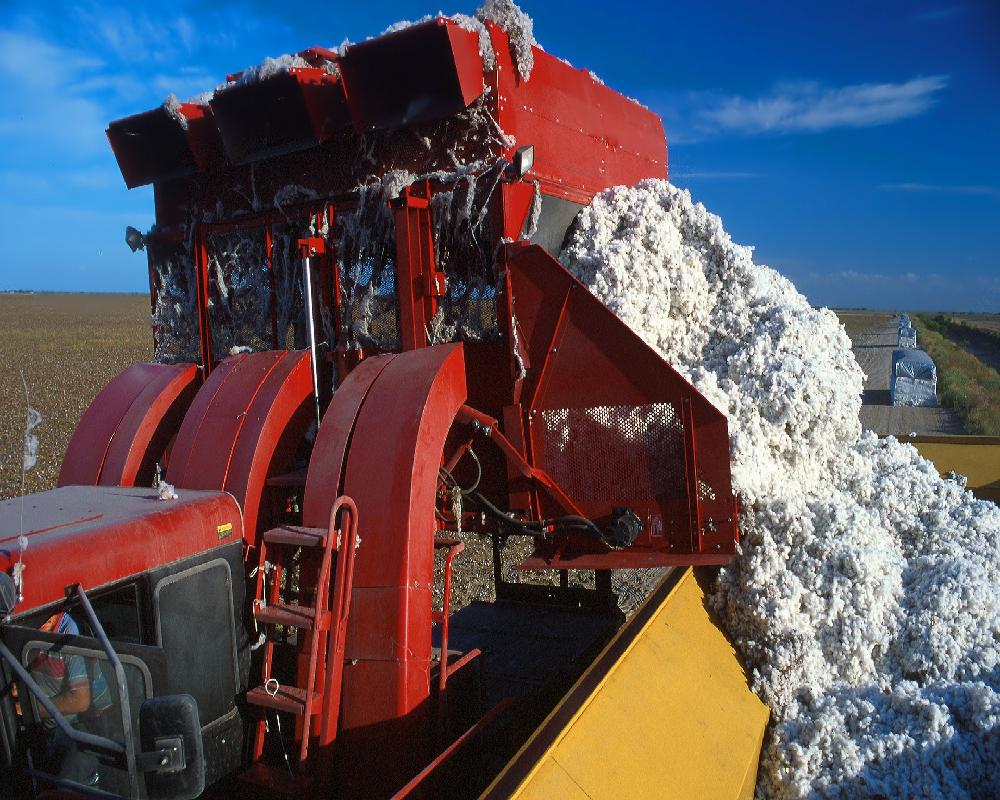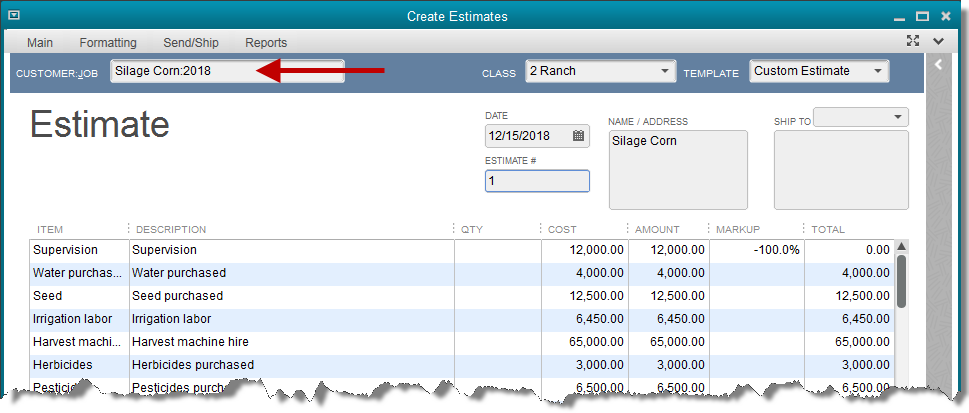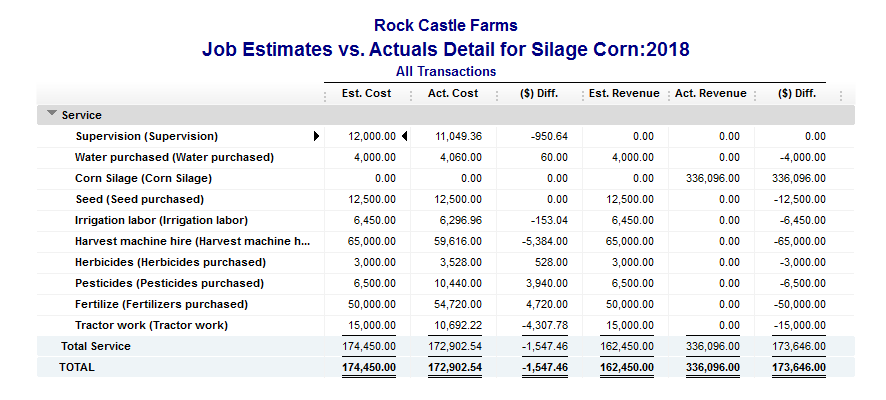Blog 
Click here to go back
Crop Budgets, A Creative Alternative

This is the seventh in a series of blog posts that will specifically examine QuickBooks from an agriculture perspective. There is no “QuickBooks for Ag”. So how can we use some of the features in QuickBooks if we are in the ag business?
Remember the post from a couple of weeks ago about using the job/project features in QuickBooks to track crop costs? Today’s post is an offshoot from that. More specifically, if we track a crop or field as we would a project, what’s the easiest way to plan or set a budget for that crop/project?
It may sound unusual, but the easiest, most effective way to do this would be by using an estimate in QuickBooks. Stay with us a couple of minutes here as we work through this. See if this can’t work for you as well.
One of the steps in tracking crops/fields as projects was to use items rather than accounts when recording income and expense. The reason for that was that the job/project reports in QuickBooks work with items, not accounts.
Forms like estimates also need items to populate them rather than accounts. Let’s look at how we might create an estimate to budget for a planned crop year.

Create the items that will reflect the major costs of a particular crop/project. This can be a subjective process to a degree. That is, the items may be different from one QuickBooks user to another depending on the costs that are important to each. One may combine herbicide and pesticide costs into one line. Someone else may want to see a line for each.
In the screenshot above, the cost has been entered for each. There are no revenue amounts for these since we will not receive income. These are costs only.
The markup column is usually left blank. But, in an experiment we’ve added a negative 100% to result in a zero for the revenue column. QuickBooks considers the total column to be total revenue.
This hasn’t been ‘field-tested’ yet, but it’s an intriguing idea. It works fine in a sample file. If you try this, let us know how it works for you. You’ll see the difference in the report screenshot below.

Above is the screenshot of the report from this simple example. The income (or revenue) for the crop shows on line three. There is no estimated number for this as it was not included on the estimate form. We only planned or budgeted for costs. We could easily have added the item for the sale of the crop as well.
You can see that all of the lines for cost items, except for the first line, include estimated revenue. That’s because QuickBooks assumes, if we enter no other amounts, the cost will also be the revenue.
In the past we’ve just ignored the revenue column for cost items. The main purpose of using the estimate was to be able to compare the estimated cost to the actual cost. If we didn’t make as much on the crop as we planned, what cost items were the culprits?
The first line though is where we added the -100% markup. It makes for a little cleaner report. Try that if you like and let us know how it works for you.
You can see a video of this topic here.
QuickBooks classes
We are partnering with the Visalia Chamber of Commerce to teach a QuickBooks class on February 22nd. You can find more info here.
We are also partnering with the Tulare Chamber of Commerce to teach a QuickBooks class on March 1st. You can find more info here.










